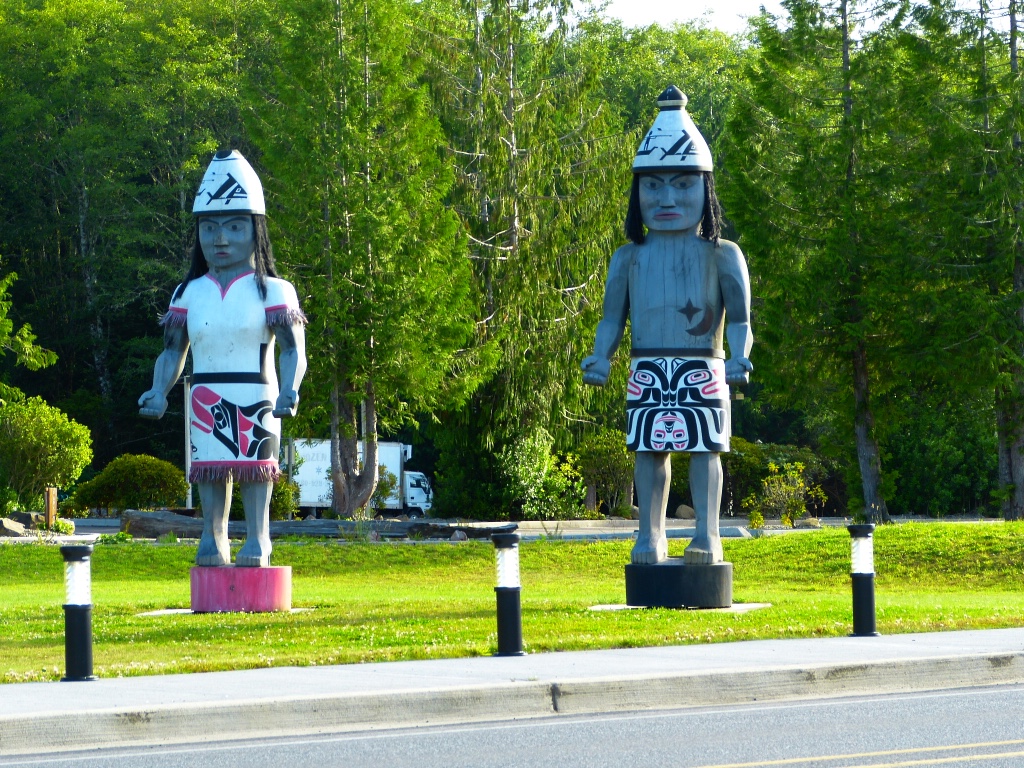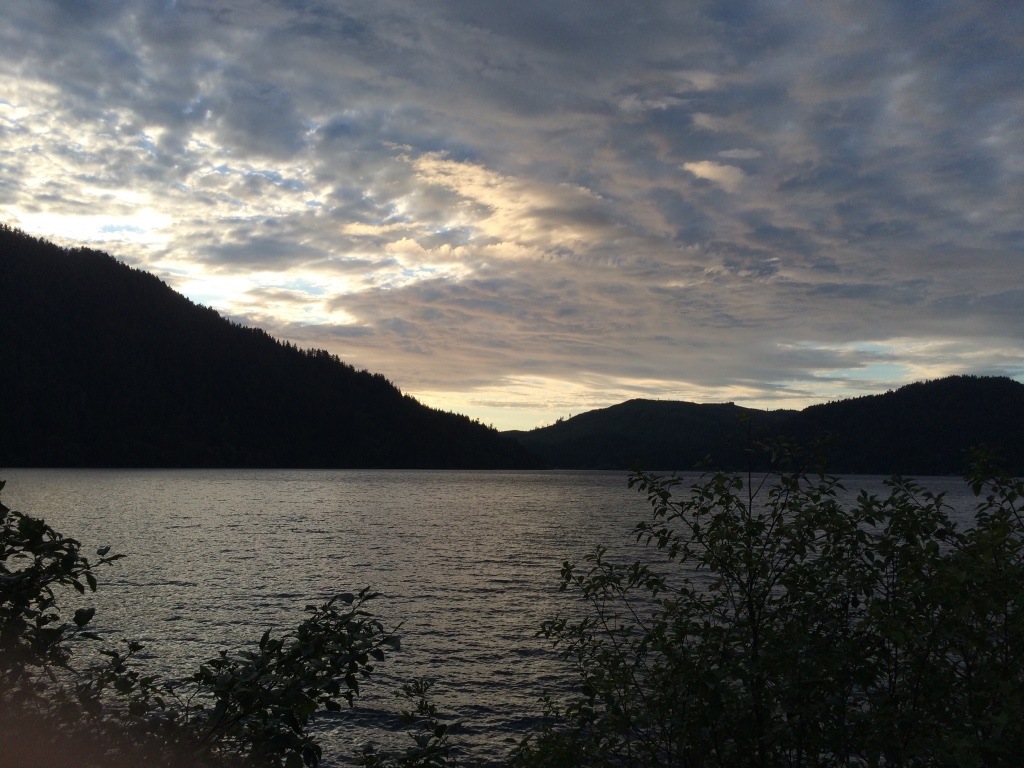 July 21, 2016
July 21, 2016 — We drive north along the
Strait of Juan de Fuca Highway and then continue through
Clallam Bay, then onto
Neah Bay. On our drive I see these totem poles lined along the side of the road. Liz tells me that they are creations of the
Makah Tribe .
We stop to take in this view and I see a sign that says:
Welcome to Neah Bay: The beginning of the world and home of the Makah, the Cape People.

The Makah Tribe (pronounced Ma-KAH) — Their Story: In the late 1700s, when Europeans crossed the continental borders into the New Land, this had a devastating effect on the lives of
Makah people. Thousands of tribal members died from epidemics of smallpox, tuberculosis, influenza and whooping cough, thus leaving large gaps in families. The unexplained loss of their family members caused the
Makah unfathomable grief, confusion and fear. Due to this, the transfer of traditional knowledge was disrupted causing many of the old ways to be lost. Successive outbreaks of smallpox reduced the southernmost villages in 1852, striking just before the signing of the Treaty of
Neah Bay.
On January 31, 1855, the
Makah villagers, represented by 42
Makah dignitaries negotiated and signed a treaty between the United States and the Makah Indians. The negotiations between Gov. Isaac Stevens and the Tribal representatives were held at
Neah Bay in the Chinook language with an English interpreter present. The Makah tribal forefathers knew it was up to them to protect their peoples’ whaling, sealing, fishing and village land rights from elimination. Certain rights were specifically outlined in articles in the Treaty to insure that the importance of continuing these traditional practices was clearly understood by both the United States government and future generations of
Makah. In order to retain whaling rights, and to protect the health, education and welfare of their people, the
Makah ceded title to 300,000 acres of tribal land to the U.S. In 1859 Congress ratified the treaty, ushering in the beginning of radical cultural changes imposed on the
Makah by the federal government and those who implemented them.
Representatives of the U.S. Government such as Indian agents, missionaries and school teachers sought to assimilate the
Makah through the implementation of laws against potlatches, ceremonies and the
Makah language. Their continued resistance against completely conforming to Euro-American standard is evident today in the
Makah peoples’ continuance of their ancient culture as they practice their ancient heritage, teach language to their children, hold dance practices and participate in canoe journeys. They continue to pass down the ancient songs of their ancestors and new songs are composed to commemorate important events in their lives.
Next ➤



